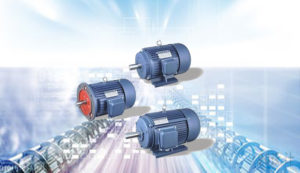Categories
- NEWS (5)
Inspection and monitoring of the motor is an important part of motor maintenance. This is an important measure to ensure the stable, reliable and economical operation of the motor. The content of monitoring includes the voltage and current of the motor circuit, the temperature rise of the motor, the sound, etc., so as to find the fault in time and eliminate it quickly to ensure the normal operation of the equipment.
The rated voltage must be maintained when the motor is working. Considering the characteristics of small marine power supply capacity and large voltage change rate, the motor operating voltage fluctuation is allowed to have a certain range of variation, but the general voltage difference cannot exceed + 6%—-10%. The three-phase voltage should be symmetrical, and the asymmetry value should not exceed 5%. Otherwise, the load should be reduced, and the power supply voltage can be adjusted when conditions permit.
When the line voltage is the rated value, the working current of the motor directly reflects the size of the load. Only when running under the rated load, the line current of the motor is close to the rated value on the nameplate. At this time, the motor is in the best working condition and the temperature also meets the requirements. If the motor is overloaded, the current of the motor will increase, the heat will increase, and the temperature rise will be too high, which will affect the service life. Usually, the rated current value of the motor is set at a certain ambient temperature. For example, the rated current of the marine three-phase asynchronous motor is the current when the ambient temperature is 45C and the operating temperature does not exceed the allowable value. In addition, the current of the three-phase motor should be balanced, and the unbalance degree is only allowed to be within +5%.
Whether the temperature rise of the electric motor is normal is also one of the important basis for judging whether the motor is running normally. The temperature rise of the motor is mainly affected by the following factors: such as excessive motor current, unbalanced three-phase voltage and current, mechanical failure of the motor, interruption of the one-phase power line, etc. You can use a thermometer to monitor the temperature, or you can touch the motor housing with the back of your hand, which should be judged by experience.
Managers should always monitor the running motor for abnormal vibration, abnormal noise, excessive temperature rise, odour and smoke. A normally running motor will emit a uniform and continuous sound due to friction, repeated magnetization of the iron core, and fans. If a fault occurs, the sound of the motor will change, and it will vibrate at the same time, so it should be stopped immediately for an inspection.
For example, the common three-phase asynchronous motor faults are: the motor emits a loud “hum” sound, which may be caused by the excessive running current of the motor lacking phase; if there is abnormal friction sound, it may be the rotor sweeping (rotor friction stator core); If there is a “gurgling” sound in the bearing position, the balls in the bearing are broken; if there is a “hissing” sound, the bearing is lack of oil; the vibration of the motor increases, which may be the unstable foundation, loose anchor screws or transmission between the production machinery The device is not properly matched, and the stator winding is partially open, short-circuited, or the rotor is broken; if there is a burning smell or smoke, it means that the motor is seriously overheated, and the insulating material is scorched.
Almost all kinds of faults of the DC motor can be reflected in the commutation spark. The size and colour of the commutation spark can best describe the operation of the DC motor. The spark of the motor in normal operation meets the specified level. If the spark is too large, it indicates that the motor load is faulty and should be stopped for inspection. Managers should often observe sparks and be familiar with the spark level, so as to judge the fault according to the size and colour of the spark.
